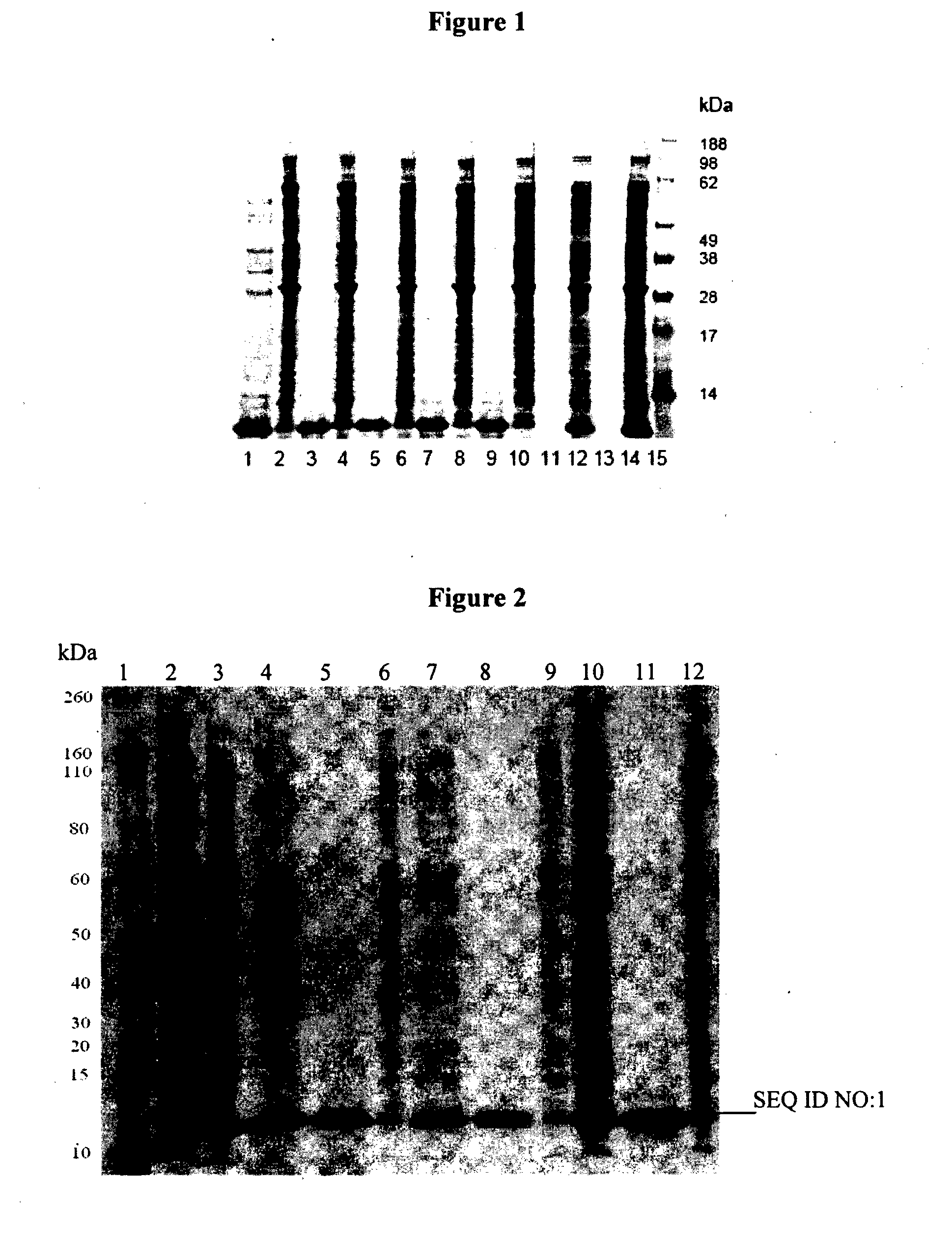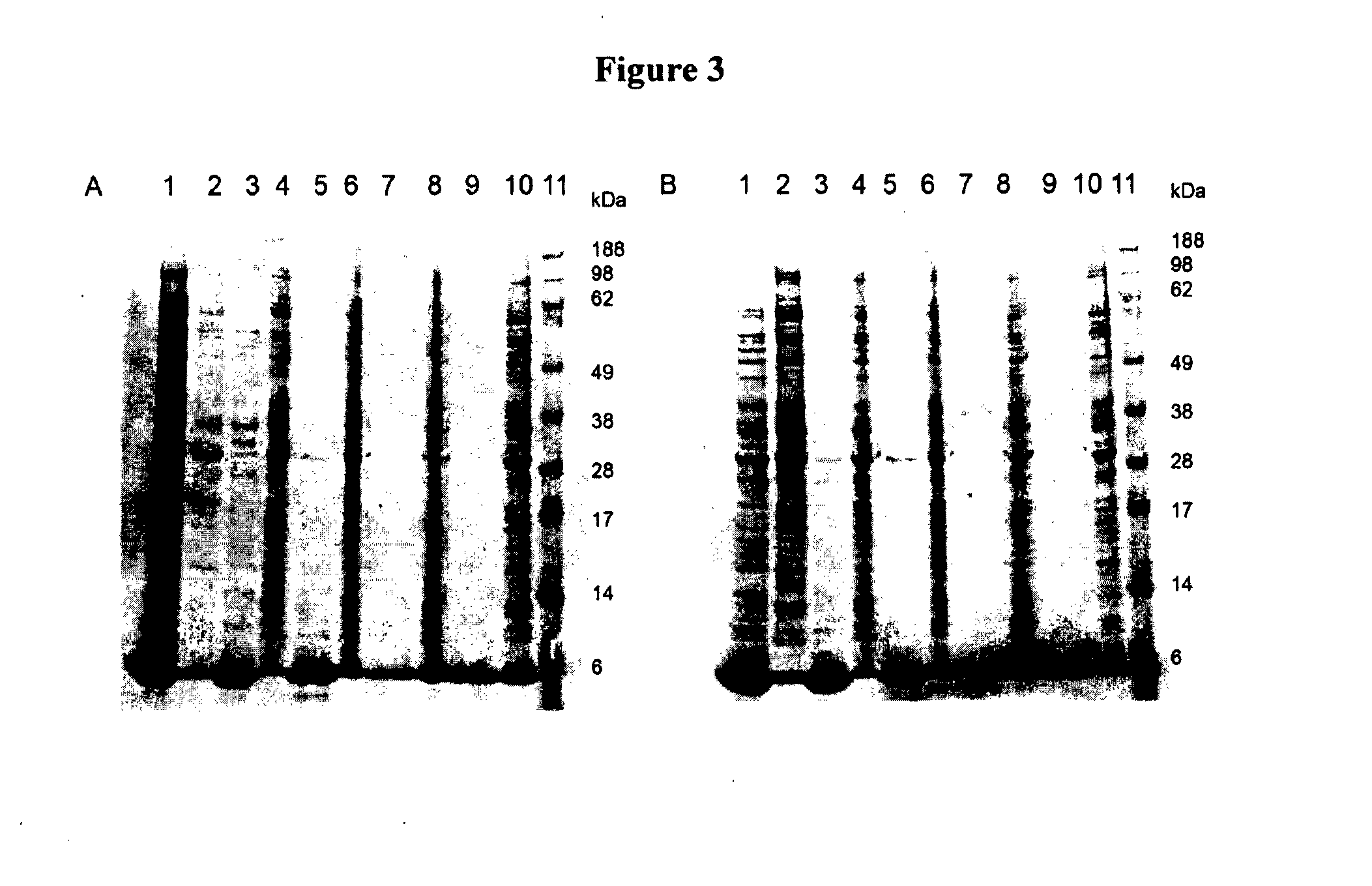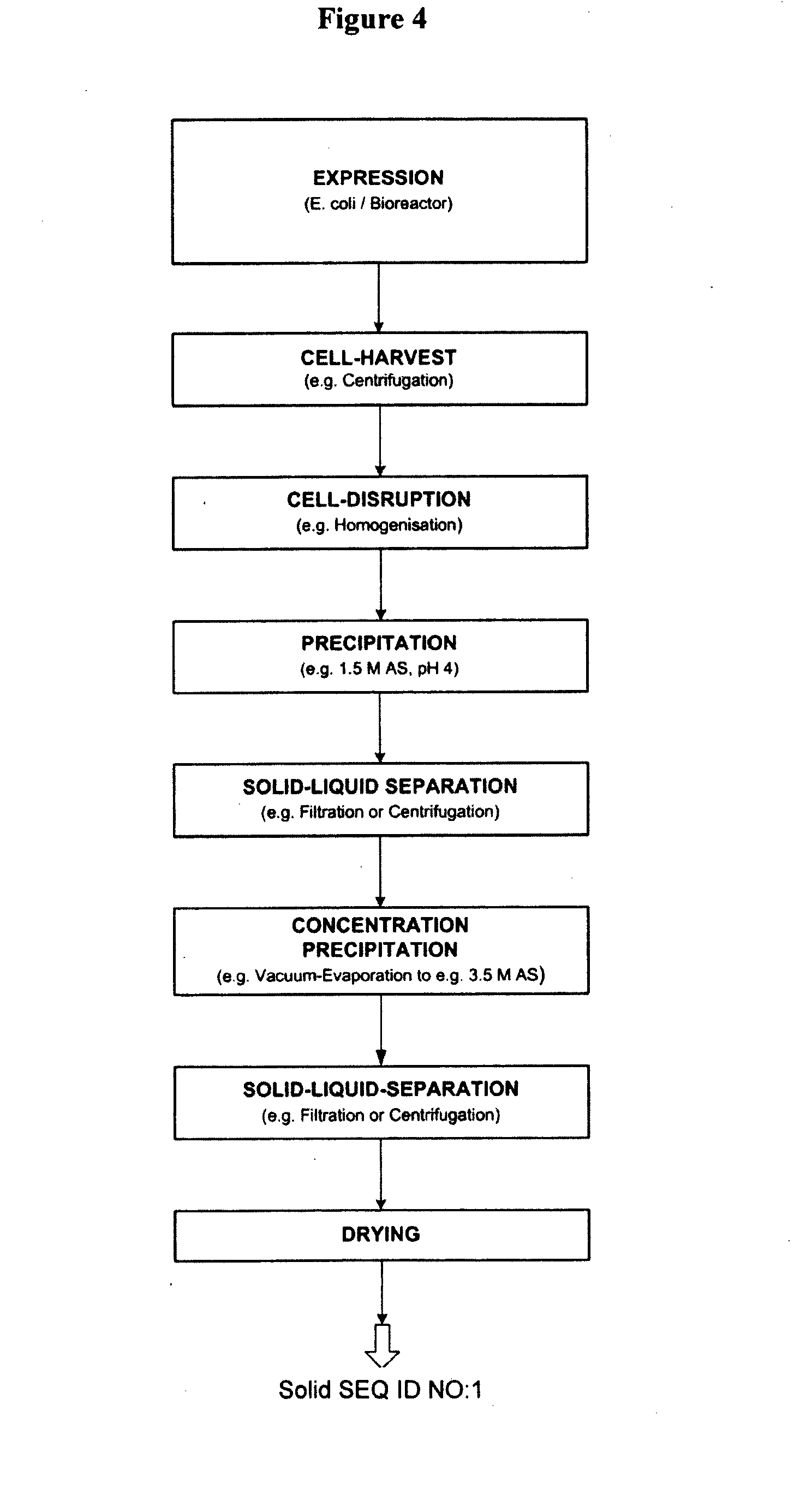Designed biosurfactants, their manufacture, purification and use
a biosurfactant and polypeptide technology, applied in the direction of drug compositions, peptide/protein ingredients, detergent compounding agents, etc., can solve the problems that peptide-based supramolecular chemistry is too costly for broad application in low-cost industrial sectors, and achieves simple low-cost techniques.
- Summary
- Abstract
- Description
- Claims
- Application Information
AI Technical Summary
Benefits of technology
Problems solved by technology
Method used
Image
Examples
example 1
Preparation of Biosurfactant Polypeptides or Proteins
[0321]Chemically competent E. coli BL21(DE3) cells are transformed with the engineered pET48b expression plasmid using the heat-shock transformation method, and then stored as glycerol stocks. From these stocks, LB plates (Amresco LB agar, Miller formulation, tissue culture grade, Solon, Ohio) containing 15 μg mL−1 kanamycin sulphate (Gibco, Invitrogen, SKU#11815) are streaked and a single colony selected for expression.
[0322]Expression may be achieved using shake flask cultures or in a fermenter as set out below.
[0323]Shake flask cultures prepared as follows:
Method Overview
[0324]For all constructs, a starter culture was grown from a single colony picked from freshly streaked glycerol stock plates (LB agar-KanS 15 μg / mL). This starter culture was used to inoculate 1000 mL of LB Kan 15 μg / mL in shake flask cultures. The cultures were incubated at 37° C. until the OD600 reached 0.5, at this point each culture was induc...
example 2
[0332]The small-scale shake flask method of Example 1 was repeated to produce a peptide analogous to SEQ ID NO:1 in which the linker sequence between the α-helices was only two residues, DP. No expression of the polypeptide was observed.
example 3
Preparation of Cell Disruptates
[0333]Cell disruptates may be prepared directly from the fermentation broth or from frozen cell-suspensions prepared from the fermentation broth. If a frozen cell suspension was used, the cell suspension was thawed before use and re-suspended in an appropriate buffer or water.
[0334]Sonication was used for cell disruption, using a “Sonifier 450” from Branson, with ultrasonic waves of a frequency of 20 kHz.
[0335]The cells were sonicated twice for 1 minute. Much of the energy, absorbed by the cell suspension, was converted to heat. Thus effective cooling is essential during sonication.
[0336]For the analysis of expression levels only, BugBuster was used to chemically disrupt cells and allow product release and analysis of supernatant and pellet samples following small-scale centrifugation.
[0337]Centrifugation was used in some cases for clarification of E. coli cells or disruptates, using a microfuge (Sorvall® Biofuge primo R). Samples were centrifuged at 1...
PUM
| Property | Measurement | Unit |
|---|---|---|
| Temperature | aaaaa | aaaaa |
| Temperature | aaaaa | aaaaa |
| Temperature | aaaaa | aaaaa |
Abstract
Description
Claims
Application Information
 Login to View More
Login to View More - R&D
- Intellectual Property
- Life Sciences
- Materials
- Tech Scout
- Unparalleled Data Quality
- Higher Quality Content
- 60% Fewer Hallucinations
Browse by: Latest US Patents, China's latest patents, Technical Efficacy Thesaurus, Application Domain, Technology Topic, Popular Technical Reports.
© 2025 PatSnap. All rights reserved.Legal|Privacy policy|Modern Slavery Act Transparency Statement|Sitemap|About US| Contact US: help@patsnap.com



